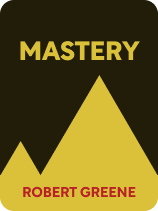

This article is an excerpt from the Shortform book guide to "Mastery" by Robert Greene. Shortform has the world's best summaries and analyses of books you should be reading.
Like this article? Sign up for a free trial here.
Are you a master of anything? Are there any shortcuts to a life of fulfillment?
George Leonard’s Mastery: The Keys to Success and Long-Term Fulfillment is about the life lived in disciplined dedication to one’s skill, craft, or art. In Leonard’s view, mastery isn’t an end goal. Instead, it’s a path.
Continue reading for an overview of a book that could put your life on a new and exciting course.
Overview of George Leonard’s Mastery: The Keys to Success and Long-Term Fulfillment
George Leonard’s Mastery: The Keys to Success and Long-Term Fulfillment contends that mastery is a lifelong journey of continuous learning, discovery, and development of a skill, such as martial arts, painting, teaching, running, chess, or anything else. Further, Leonard—a writer and an educator—argues that the master’s path is the only surefire way to live a fulfilling life. Modern culture teaches us to want the quick, easy, and effortless way to success and happiness but never really gets us there.
Leonard wrote Mastery, originally published in 1991, to share the expertise he gained from years as a student and teacher of two disciplines: flying jets and practicing aikido, a Japanese martial art known for its subtle complexities. We’ll detail his perspective on the path of mastery, from his basic definitions of four lifestyles—the master, the dabbler, the obsessive, and the hacker—to his discussion of how to get on the master’s path, overcome its obstacles, and reject the shallower way of life that the modern world pushes us toward.
Mastery Is a Path, Not a Destination
To begin, we’ll explain Leonard’s definition of “mastery.” Put simply, mastery is the continual, focused pursuit of developing a skill. In this sense, it’s the way of life lived by those who choose to walk the path of the master.
That concept—that mastery is a path, rather than a goal—is the core of Leonard’s perspective. To live his notion of mastery is to immerse yourself in the lifelong process of discovering, refining, and constantly learning more about the skill you choose to pursue. Thus, Leonard says, mastery is an endless journey along which you commit to deep, dedicated learning of the myriad minutiae of your chosen skill. It takes patience and focus to steadily grind away at the fundamentals, to build a solid base of basic skills, and to choose to keep going. All along the way, remember that the end goal isn’t the point—rather, the path itself is the point.
Embrace the Plateaus, Reject Easy Shortcuts
If mastery is a path, then the main features of that path, according to Leonard, are its recurrent plateaus or flat zones. Put another way, he contends that, when you develop a new skill, your growth looks not like a continual upward trend but rather like a series of long, flat periods of hard work with few visible results. Every once in a while, these flat zones give way to spurts of growth—intermittent moments when everything you’ve been training for comes together, and you finally achieve competence in the technique or move you’ve been learning.
These plateaus are the main reason many people fall off the path of mastery. Leonard says that most, if not all of us, want to be good at something. However, we feel daunted by how long it takes to achieve real skillfulness. When we hear that it may be years before we can properly pitch a ball or perform on the piano, we lose all motivation. We don’t want to struggle through the long days of grinding away at mundane, minute techniques with little to show for it.
The Plateau Is the Path
Falling off of the plateau, Leonard says, is a tragedy, because we’re all born with the potential to be masters. Human beings are learning animals: We’re wired to develop skills that we aren’t born with, a capacity that no other animal has. We can learn to write grand symphonies, hike the highest mountains, create wonderful meals, or run faster than anyone ever has. We’re all born with the potential to master some skill, be it music, athletics, relationships, or business. Wasting that potential is a terrible loss.
To avoid that mistake, embrace the plateaus you’ll encounter along your path of mastery. Since most of the path consists of these flat periods, we need to sink deep into them—deep into the steady, diligent practice of fundamentals, repeating the technique dozens or hundreds of times. In other words, Leonard says, we must learn to love practice for its own sake—to recognize that learning happens all along the way, even if the motivating results only appear to happen every once in a while.
Put another way, Leonard argues that to become a master is to learn to do something simply because you love it rather than for any external rewards or motivations. When you have that desire to do something out of a simple, quiet joy for the activity itself, you know you’re on the path of mastery.
Instant Gratification Distracts From Mastery
If we’re all born with the capacity to be masters, why are the plateaus such a challenge? Leonard says that most of us fall off during plateaus because they reveal our real motivations: that we just want to look good, impress our friends, or have some fun. For Leonard, most of us aren’t serious enough to pursue real mastery.
According to Leonard, this is because modern culture conditions us to want instant gratification above all else. Advertising, television, and other sources of easy dopamine have taught us that the exciting, fast, and easy solutions are the best way to solve problems. This attitude has leached into all areas of our lives, and many people have lost the willpower to do anything that requires real, hard work.
Ultimately, Leonard says, this lifestyle leads nowhere good. When the pace of life is characterized by one high point after another, the end result is a dramatic fall. It’s impossible to keep the climaxes coming forever. Like a drug addiction, each successive hit feels worse than the previous, and you’ll eventually be fragile, impatient, irritable, and unable to focus—unable to live with presence, patience, and diligence, as a master does.
Three Learning Styles That Prevent Mastery
Having detailed Leonard’s definition of mastery and its main characteristics, we’ll next look at three other learning styles that he contrasts with the master, whose learning style is that of the patient, diligent, path-embracing person described in the previous sections.
The following three learning styles characterize people who aspire to mastery yet ultimately fall off the path. According to Leonard, people split into these categories into even thirds, give or take a little. He recommends that you try to spot which one you might be so that you recognize how you might be avoiding or neglecting your potential to become a master.
The Dabbler
The first learning style Leonard describes is the dabbler—someone who’s always in pursuit of novelty. He’s always excited to try some new skill, and he works at it for a time with great enthusiasm, often overcoming the first plateau to achieve a spurt of progress. However, as soon as things get hard, he becomes baffled and dismayed. His enthusiasm wanes, and he starts finding reasons that this skill just isn’t really for him. Ultimately, the dabbler cares more about novelty and about feeling good than about developing a skill in any committed way.
The Obsessive
Next, Leonard describes the obsessive—someone who focuses on results at the expense of all else. He doesn’t care how he gets there; just that he does. He’ll take shortcuts, work obsessively hard, and push himself unreasonably far. He’ll try to perfect his technique in the first lesson, the first hour. He makes progress, but inevitably he burns out, falls off, and never returns to that pursuit.
The Hacker
The final learning style Leonard describes is the hacker—someone who isn’t concerned with serious learning. Rather, he’s content to know just enough to enjoy himself—just a few chords on the guitar, just a handful of decent dinner recipes. He’s content to be just OK at the skill, to stay on the plateau forever, and never overcome any real obstacles to growth and development.
Mastery’s Five Core Lessons
Having explained the nature of mastery as well as the three more common learning styles that impede it, we’ll next discuss five core lessons that, according to Leonard, will get you on the master’s path. Namely, we’ll detail how to find a great teacher, how to practice, how to let go of results and get on with the process, how to visualize your growth, and how to push beyond your edges.
Get Instruction
Leonard says that while it’s possible to learn skills on your own, the best learning happens under the guidance of a skilled instructor. This is because teachers can tailor their instruction to your specific needs as a learner. Your teacher can give you precise, specific feedback, demonstrate the forms and techniques of your skill, offer encouragement, and mentor you through your unique challenges. In contrast, you’ll spend a lot of time trudging through territory that’s already been mapped if you try to learn on your own.
To find a great teacher, pay attention to the following factors:
- Lineage: While this is an old-school consideration, Leonard argues that your teacher’s lineage matters. If you can trace a line of teachers back to a reputable and well-established school in their field, you’ll know they’re well-grounded in the skill.
- Teaching style: Look for an instructor that balances positive and negative feedback in a roughly 50/50 ratio. That is, they’ll offer both words of encouragement and constructive critique, but not too much of either.
- Patience: The best teachers, Leonard says, are those who embrace the challenge of working with the least talented pupils. If a teacher is patient, compassionate, and sincere with slower learners, you know they have the heart of a master teacher.
Finally, Leonard recommends that you be ready to break it off if, even after you’ve chosen a good teacher, the student-teacher relationship doesn’t work out. Teachers, like anyone, are only human. If you feel uncomfortable or like you just aren’t learning effectively, know that it’s alright to say goodbye and look for someone else to guide you.
Embrace Practice
In the end, the way of the master is practice. Leonard explains that we should understand this word in two ways:
- As a verb, meaning to regularly engage in your chosen skills.
- As a noun, meaning your practice as something you have, live, and embody.
That latter sense is more important, for a master is most interested in practice as an end in itself. In other words, the practice itself is the point and path, and masters live primarily for their practices. Results are secondary to everyday immersion in the essential, ongoing practice of your skill.
At first, practice will probably seem tiresome. However, Leonard contends that over time, it transforms into something deeply alive—a time and space into which the master fully immerses himself in the exploration of the nuances and subtleties of his craft. For instance, you could spend a lifetime exploring the endless scales, chords, intervals, and other musical patterns on the fretboard of a guitar. Even one chord, containing three or four notes, could be “voiced” or played in various ways, placed in myriad positions across the fretboard, and combined with hundreds of other such chords to create thousands of variations, thousands of sounds.
From the basic moves, which the master returns to time and again, to the advanced techniques, this way of approaching practice allows for lifelong cultivation and refinement of your skill.
Submit to the Process
The master’s path is thus to continually learn and to do this requires surrender, according to Leonard. Surrender means letting go of your ego or any pretense to skill that you carry. If you clutch onto some idea that you’re already good enough or you always know what’s best, you’ll be too preoccupied with protecting your sense of self to truly learn anything. Leonard explains two ways in which you must surrender:
First, you must surrender to your teacher: Having already made sure you have a good teacher, trust what they have you do—no matter how ridiculous it seems. Right now, they’re the master, and you have to trust that they know what’s best for the beginner (you).
Second, Leonard says, you must surrender to your ignorance: To learn requires that you be willing to look foolish. At first, you’ll be bad at whatever new skill you try to learn. However, floundering and flailing is precisely the mistake-driven learning process that takes us forward. If you’re unwilling to look foolish, though, you won’t make progress because you’ll be afraid to make mistakes or look like you’re bad at something.
According to Leonard, the true master is an eternal beginner, always willing to play the fool. This is because with any sufficiently complex skill, there’s always more to learn—for each step you take, there are always two more that arise on the road ahead. Thus the master walks her path not to reach results, but to sink ever deeper into the mysteries and challenges of her chosen skill.
Visualize Your Growth
According to Leonard, the best learners use visualization, or mental rehearsal, to cultivate their skills. Leonard argues that this technique is the one key that high-performing athletes, businesspeople, and artists use to perform at higher and higher levels of skill. Mental rehearsal simply means creating in your mind a clear, vivid image or scene of a move or technique that you’re learning. For instance, you might visualize yourself performing a difficult passage on the piano or executing a perfect kickflip on the skateboard.
Visualizing in this way allows you to create a precise, focused template that your body will then follow when you go to perform the move in real life. According to Leonard, visualization trains your mind to start forming the circuits you need to execute that move as if by habit. The more you rehearse it—and the more vividly you do so—the stronger these “preconditioned” habits become. Ultimately, this is the master’s best technique for isolating and refining specific moves and techniques, and it accelerates the learning process beyond what practice alone can do.
Push to the Edge
Lastly, Leonard writes that masters tend to be people who push to the edge of what’s possible in their chosen fields. While masters also deeply love the basics and will practice them for many hours, they also feel drawn to explore the outer limits of what they can do. For instance, a master snowboarder will have spent countless hours refining his basic balance, jumping, and landing techniques—all of which enable him to try to pull off tricks like the quadruple backside cork 1980, one of the hardest snowboarding stunts ever performed.
While this only comes after many years of training, Leonard says that it’s the ultimate affirmation of life—an exhilarating move to express your skillfulness in its fullest strength and to discover what you’re capable of by pushing beyond anything you’ve achieved before.
The Master’s Toolkit
We’ll detail Leonard’s final words of advice regarding four challenges that you’ll face along the path of mastery. Namely, we’ll discuss his advice on overcoming resistance to change, building your energy, avoiding common pitfalls, and mastering the mundane aspects of everyday life.
Change for Good
According to Leonard, it’s important to achieve lasting change in your lifestyle when you seek mastery. After all, to walk the master’s path is no small commitment and will require you to prioritize your chosen skill over many other things. But, lasting change doesn’t come easy. We all hesitate, stumble, and often fall when trying to change our habits, behaviors, or ways of living. We all slide backward as we try to change.
This happens because, Leonard explains, the human body and mind strive to maintain homeostasis—your natural balance of energy and effort—every day. When you try to change, your body and mind sense that something different is happening, and they generate resistance to get you to settle back into your normal patterns.
For instance, you may have tried to build a habit of getting to the gym or waking up early (or both), and soon after slipped back into an old pattern of sleeping in or finding excuses not to do as you’d planned. That’s just your natural physiological systems demanding that you make no significant changes to the established balances—not a lack of willpower or moral fortitude.
Overcome Inertia
According to Leonard, change, then, requires that you overcome the inertia of homeostasis and leverage your willpower to shift your body and mind into a new balance. He explains that this balance comes only when you can stick to a habit long enough that your body and mind adapt to the new efforts or exertions, while also acknowledging that resistance and not pushing so hard that you hurt yourself. In other words, Leonard says, you need to:
- Anticipate that resistance will arise and prepare for it,
- Listen to that resistance to learn what’s difficult for your body and mind, and
- Push gently yet firmly through those challenges until the change sticks.
Leonard adds that it’s important to be consistent in your practice and remain committed to the change you want to make. By doing so, you’ll eventually change your natural balance; you’ll teach your body and mind to incorporate the new daily effort you’re making—whether it’s a morning run, a daily yoga session, or a commitment to cook healthy dinners each day.
Generate Boundless Energy
If you don’t have the energy to change, you won’t be able to stick to the path long enough to build a steady, committed practice. For this reason, Leonard explains that any aspiring master must learn to release the huge, untapped stores of energy that we all have within.
Throughout life, Leonard argues, we’re conditioned by social expectations and mores to repress large parts of our personalities, and this effectively shuts off our expansive, energetic nature. We learn to quiet down, fit in, and not rock the boat. Unfortunately, this also tends to make us lethargic and depressed.
Leonard offers four ways to reclaim your lost energy:
Exercise regularly. We gain energy not by resting and storing it up, but by using it. Movement, exertion, and exercise use energy up front but make you more energetic over the long run—so be sure to exercise regularly, even if it’s just to go for a walk.
Emphasize the positives. Positive thinking, Leonard asserts, produces healthier, happier, and more energetic people. This doesn’t mean you should deny the negatives. Instead, acknowledge them first so that you’re at peace with them, and then refocus on what’s positive, uplifting, and energizing.
Embrace your shadow. Though we’ve all repressed large parts of our personalities, Leonard says that we can honor them in order to release large amounts of energy from within. For instance, you might redirect repressed anger or sadness into fuel for art, exercise, or work.
Get clear, get committed. You can’t do everything, but Leonard warns against letting decision paralysis prevent you from doing anything. Pick one thing you feel strongly drawn to and commit to it, letting the rest go. This, Leonard says, will clarify your intent and unleash energy.
Overcome Hindrances
Once you’ve built your energy and understood how to make lasting change, you can prepare for the common obstacles you’ll face along the way. Leonard explains how to overcome a number of these:
When your pursuit of mastery and your livelihood don’t match up, you’ll need to make space in your life for both, Leonard says. Be sure you have enough time by planning out the hours you’ll need for each and sticking to a disciplined work/practice schedule.
Leonard also recommends that, when competition looms large—for instance, if you’re mastering a skill like chess or karate—avoid being over- or under-competitive. In other words, remember that results aren’t the point, but don’t phone it in either—competing with spirit will help you understand how far you’ve come, as well as how much more you have to learn.
Leonard says that, when unproductive personality traits arise—such as laziness, ego, overseriousness, or perfectionism—try to let go and remember the humor in all things. Take heart, find opportunities to laugh and relax, and avoid becoming too self-important.
Finally, when you get injured, which Leonard says is likely to happen in most physical disciplines, give yourself the grace to rest and heal. To prevent injuries, remember to balance hard work with an awareness of your body’s limits and pain points.
Master Everyday Life
We’ll touch on Leonard’s advice for perhaps the most direct way to get on the master’s path—mastering the mundane, everyday aspects of your life.
Everyday life, Leonard says, is full of opportunities to practice as the master would. The only reason we don’t approach these activities as such—from folding the laundry to maintaining your car or relating to your loved ones—is because we’ve been conditioned to seek the end goal. According to Leonard, we live in a “getting things done” culture, with the emphasis on done. We do things not for their own sake but to get them over with.
According to Leonard, if you want to live a rich and fulfilling life, the “getting things done” mindset is the wrong way to go about things. He says that we should instead seek to cultivate the master’s attitude in all of these mundane, intermittent moments of life. To do this:
1) Start from a relaxed presence. Before beginning to, say, fold the laundry, take a moment to compose yourself for the task ahead.
2) Fully immerse yourself in the activity at hand. In other words, maintain that presence from which you started in each moment of the activity. Pick up and fold each new article of clothing with a calm, diligent focus on that task, striving for excellence and elegance in each minute aspect of the activity.
3) Forget about the end goal. The master practices not to achieve a result but for the sake of the activity itself. Paradoxically, Leonard says that this often improves the result since you’ll be more dedicated to patient, quality performance of the activity.
Leonard says you can cultivate the master’s attitude in all the mundane aspects of life—everything from driving to work to cooking dinner, cleaning your house, or tucking your kids into bed each night. Approach these activities with presence and diligence, and you’ll be well on the way to living as a master would in every aspect of your life.

———End of Preview———
Like what you just read? Read the rest of the world's best book summary and analysis of Robert Greene's "Mastery" at Shortform.
Here's what you'll find in our full Mastery summary:
- How to walk the path of the master by being disciplined in your skill or art
- Why mastery isn't an end goal, but rather a continual process of learning
- Why the master's path is the only guaranteed way to live a fulfilling life






